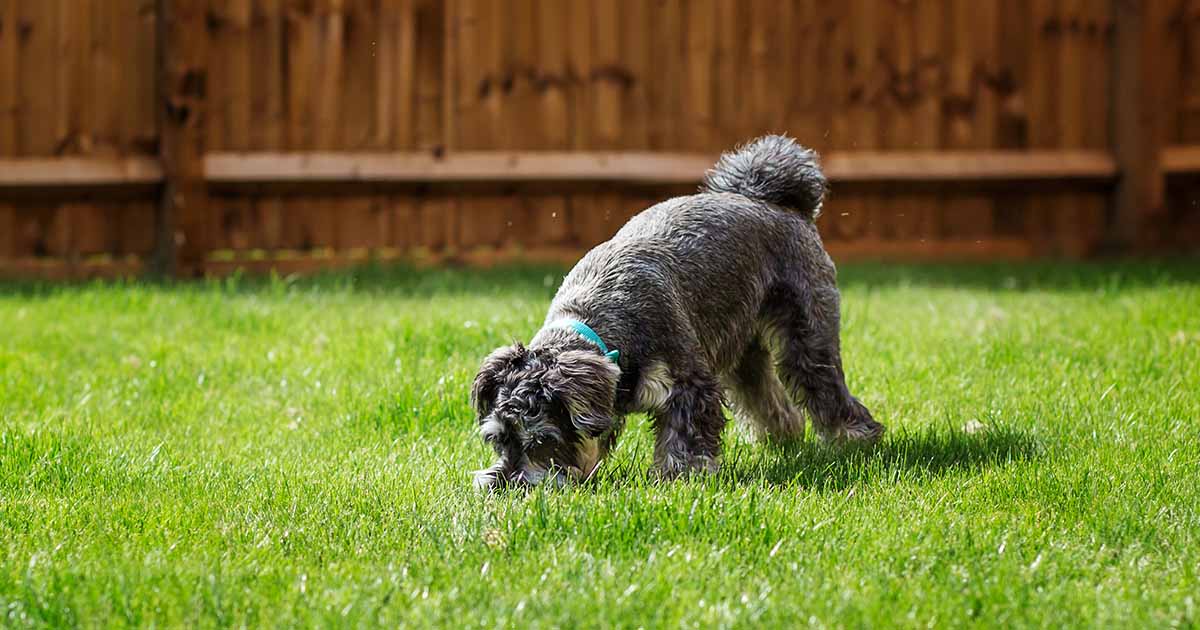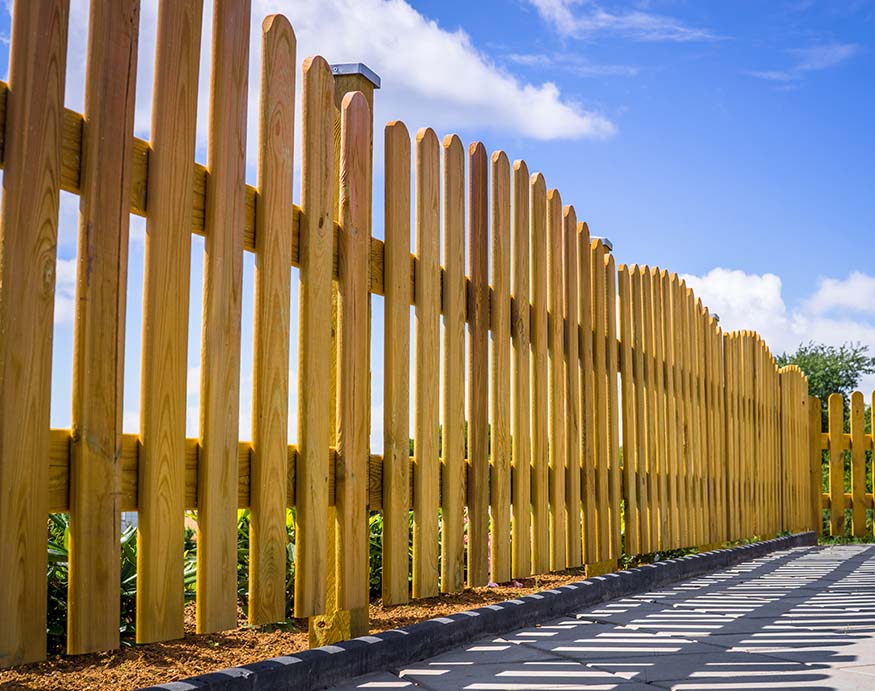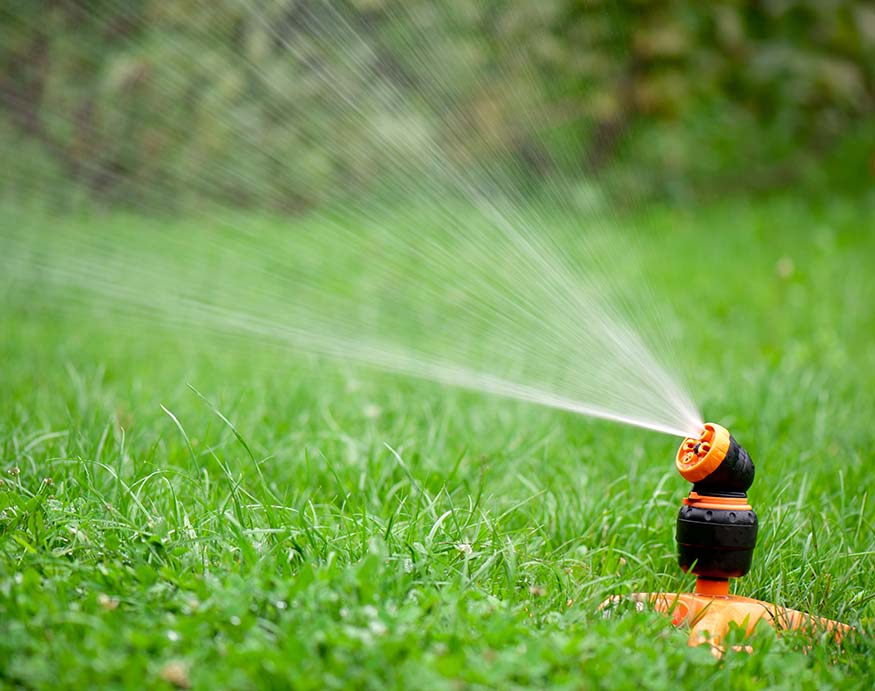There is something particularly violating about finding dog poop on your front lawn. The sight immediately breeds feelings of disgust and discontent. In most cases, the act isn’t personal, but it can be hard not to feel like it is, which only worsens the situation.
Luckily, whether you are dealing with a malicious pooper or just a careless neighbor, the solutions for keeping dogs from pooping in your yard are the same.
One of the simplest things you can do is to erect a barricade using cheap, decorative fencing.
But if this isn’t an option for you, don’t worry. We’ve got plenty more effective solutions worth considering.
Disclosure: It is important you understand that we may receive commissions when you click our links and make purchases. However, this does not impact our reviews and comparisons. All opinions are our own. We pride ourselves on keeping our articles fair and balanced. For more info see our disclosure statement.
6 Ways To Stop Dogs Pooping On Your Lawn
The best way to stop a dog from pooping on your lawn will depend on your exact situation. Are you dealing with strays running amuck or just inconsiderate neighbors? Some of the below options will work in all situations, while others are suitable for particular cases.
1. Have a Chat With The Owner
If you know which neighbor has been allowing their dog to poop on your lawn, this is a great place to start.
While it can be an uncomfortable conversation, talking to the owner is often the most effective way to keep seeing repeat performances.
Of course, this is only worth trying if you feel comfortable approaching the person. If you do, always remember to be friendly and keep the conversation civil.
If you know when the problem usually occurs, one great approach is to wait outside and offer your neighbor a poop bag after the deed is done. This will draw their attention that you are aware of what’s been happening and let them know that you don’t like picking up after their pup. And all without an uncomfortable direct conversation.
If you do have to take the issue up directly, it may be helpful to bring any evidence you have, like CCTV recordings or photographs.
Most people who let their dogs poop in other people’s yards do it because they think nobody cares. Once you have called them out on the behavior, they are likely to change it. Or, at the very least, choose a different yard to let Fido do his thing.
2. Put Up Barriers
A physical barrier that either keeps intruding dogs out of your yard or makes your lawn less accessible is going to be one of the most effective ways to keep your grass poop-free.
There are many different options when it comes to barriers that work to keep dogs out.
Fencing
Putting up a fence is a great way to keep dogs off your lawn. This can be a full privacy fence or a smaller picket-style fence.
If you are dealing with loose dogs, such as strays or wanderers, you’ll need to fully enclose the area to ensure they don’t have access to your yard. Even putting up the fence along the edges of your property is likely to help mitigate the situation.
On the downside, putting up a fence can be a time-consuming and expensive solution. And you’ll have to live with it long after the pooping dog has found somewhere else to squat.
Decorative Fencing
Decorative fencing is a much less expensive and less permanent solution to your poop problem.
Home improvement stores sell several different decorative fencing options, from short edging panels to tall collapsible iron garden fences.
While these shorter, less robust options are less likely to keep out wandering dogs, they tend to be plenty to stop leashed dogs from coming into your yard. A physical barrier at the edge of your lawn, even a short one, will discourage most dogs from stepping off the sidewalk.
Living Barrier
Living barriers, such as shrubs or tall plants, serve a similar purpose.
While large dogs would easily break through these barriers, they are more likely to walk alongside them, especially if they are on a leash.
Of course, these kinds of barriers require investment. They take time to grow and require watering and care for years after. Like a privacy fence, this is only a great option if you plan to do landscaping anyway.
Rocks
Using rock as a barrier is a great, low-maintenance way to keep dogs off your lawn.
Dogs typically seek out soft, comfortable terrain to do their business. Most don’t even like to walk over medium or large-sized river rocks if they have the choice. A sizable run of rock—a few feet wide at least—between the sidewalk and your grass is usually enough to encourage dogs to move along.
This method gives your landscape an update without requiring a lot of follow-up maintenance.
Related post: The Best Grass For Dogs
3. Use a Repellant
As you know, dogs have a great sense of smell. You can use this to your advantage in the fight against unwanted business by utilizing strong-smelling liquids to repel dogs from entering your yard.
Liquid Fence
Liquid Fence is a product designed specifically for keeping cats and dogs away from your lawn.
The smell, which is quite strong, works to disorient the animals by masking natural animal smells. While the odor doesn’t actually repel them, the fact that they can’t smell other animals or scent markings may make them feel uneasy enough to want to leave.
This product is probably best suited for problems with stray animals visiting your yard habitually. It may also work well if you have multiple dogs using your yard to scent mark. The smell will cover the previous marks and help convince the next pup who walks by to do his business elsewhere.
But be prepared for a pungent odor, not just where you spray, but wherever you store the bottle. You will also need to make frequent repeat applications — about every 4 or 5 days.
Vinegar
Vinegar makes a surprisingly effective and simple dog repellent. Its naturally strong odor is an irritant to those strong canine noses, so they tend to stay away from areas where it has been applied.
But you will need to be careful with vinegar as it can kill plants if applied directly. Instead, try soaking some cotton balls in vinegar and placing them around the area where the dog frequents.
If you have a dog that always poops in the same spot on your lawn, you can use a spray bottle to mist the area until the habit is broken.
Cayenne Pepper/Chilli Powder and Garlic
Like vinegar, a mix of peppers and garlic can create an irritating odor that dogs will naturally avoid.
To make this mix, you will need:
- 1 quart warm water
- 1 tsp dishwashing liquid
- 1 chopped onion
- A few chopped garlic cloves
- A few dried chili peppers, crushed; OR about 1 tsp chili powder
Mix all the ingredients in a large jar and let sit for 24 hours. Then strain out the chunks and pour the liquid into a spray bottle.
Spray this mixture around your property where dogs frequent or along the edge of your yard.
Citronella Oil
Citronella is often used in non-electric bark collars and in products meant to stop aggressive dogs. So, you can imagine that it makes a pretty good doggy repellent.
To make your own citronella repellent, you’ll need:
- 4 ounces pure citronella oil
- 2 pints of water
- A dash of dish soap
Mix all these ingredients in a spray bottle. Apply to any areas of your yard that the offending dogs visit. You will have to reapply frequently, especially after rain.
4. Use Sprinklers
While you will encounter the occasional Labrador that wants nothing more than to run through the sprinklers, the vast majority of dogs will go out of their way to avoid getting sprayed. That makes using your sprinklers a great way to stop unwanted pups from coming into your yard.
If you have a repeat offender on a predictable schedule, program your sprinklers to go off in that area of the yard during that time of day. You can even trigger them manually if you see the pup approaching.
If your pooper is a little less predictable, a motion-activated sprinkler is a great choice.
These smart products attach to your hose and react to any movement. It turns on for a short amount of time, but the sound of the sprinkler turning on is enough to startle most dogs and send them running off your lawn.
Just be careful how you position your sprinkler. You may want to spray your rude neighbor as well as their dog, but this is only likely to end with some innocent people getting soaked. Instead, place the sprinkler at the edge of your lawn with the sensor pointing in toward your property. That way, it will only go off if something steps onto your lawn.
Learn more: Muddy Dog Yard Solutions
5. Ultrasonic Animal Repeller
Like mice and deer, dogs can hear higher frequencies than people can. This presents a unique opportunity to drive animals away without annoying yourself or your neighbors.
Ultrasonic animal repellers work by emitting a high-frequency noise that irritates the animal, effectively repelling them from the area. These work pretty well for small animals but can be hit or miss with dogs.
One thing that we have found makes these items more effective against canines is the surprise factor. When the high-frequency sound is continuous, dogs usually ignore it. But if it suddenly comes on, it tends to surprise them and drive them away.
If you want to try an ultrasonic repeller, we recommend one like this Amerfist Repeller. Instead of emitting a continuous sound, it only turns on when it senses motion, which increases the odds that it will startle the dog.
6. Water Bottles
This is a strange one, but enough people swear by it that we feel it is worth mentioning.
To try this method, take a plastic water bottle—the clear 1 liter types seem to work best—and fill it halfway. Place the bottle on its side on your lawn where the dog usually poops. According to those who have tried this, the water bottle will deter dogs from defecating in the area.
Why this works (or allegedly works) is anyone’s guess. Some think it has to do with dogs not wanting to go to the bathroom near a freshwater source. Others believe the glinting light off the water might scare them away.
If I had to guess, I’d say it has more to do with the dog being distracted by a novel object. Something new sitting in the place where I normally poop? I better give this a good sniff and save my business for later!
Regardless of why it works—or whether it works—it’s a cheap and easy enough solution that it’s probably worth a try.
Contact Your Local Animal Control
If all else fails, you always have the option to call animal control. But how effective this will depend on your situation.
If you know who is responsible for the unwanted deposits, you may be able to convince animal control to stop by to warn or cite the individual. But you will likely need proof of repeated transgressions and the person’s address.
Even then, some agencies won’t get involved or won’t do enough to stop the problem.
If you are dealing with stray dogs or dogs that are illegally walked off-leash, you have a better chance of making progress.
Animal control should take action in the case of stray dogs and try to catch them. If the owner is breaking multiple laws, such as not picking up poop and walking their dogs without a leash, it’s more likely an officer will come out to investigate.
At the very least, animal control should be able to give you some more pointers on how to deal with the situation.
The End Of Dogs Pooping On Your Lawn
No one wants to find mystery dog poop in their yard day after day. But having a whole slew of tools to counteract the situation will help you feel more in control while finding the most effective solution.
If you are dealing with rude neighbors and trespassing pooches, the simplest and most effective option is to put up a fence or construct a barrier. If that doesn’t work, then using an ultrasonic repeller, Liquid Fence, or a motion-activated sprinkler may be worth a try.


